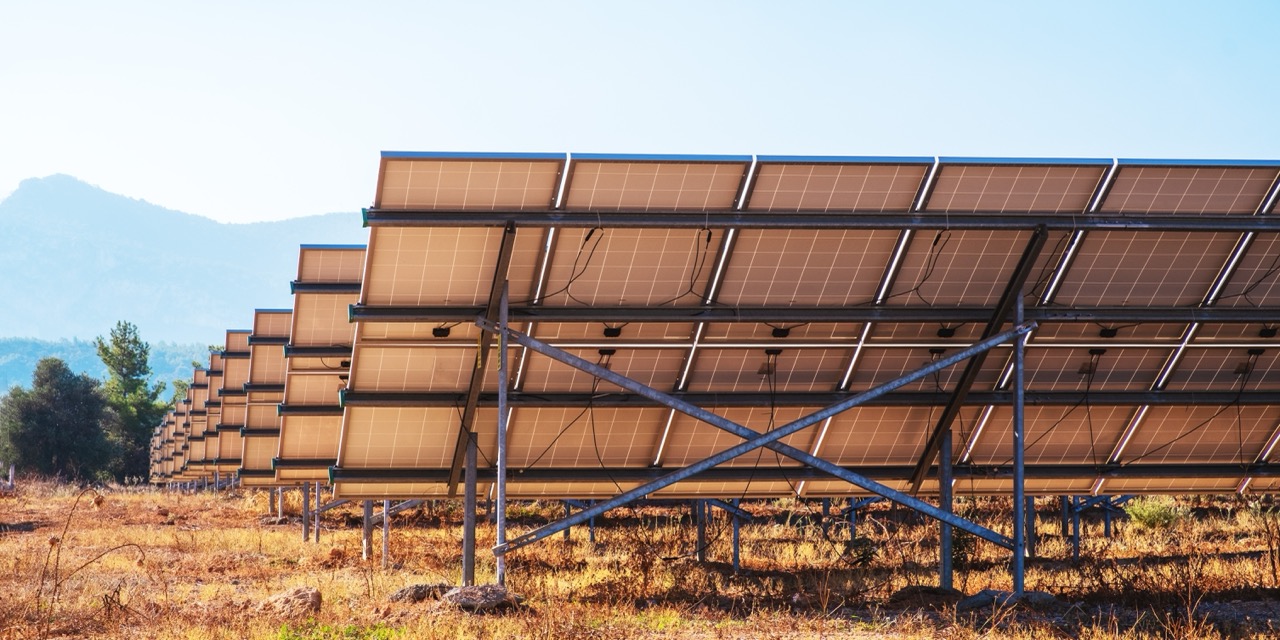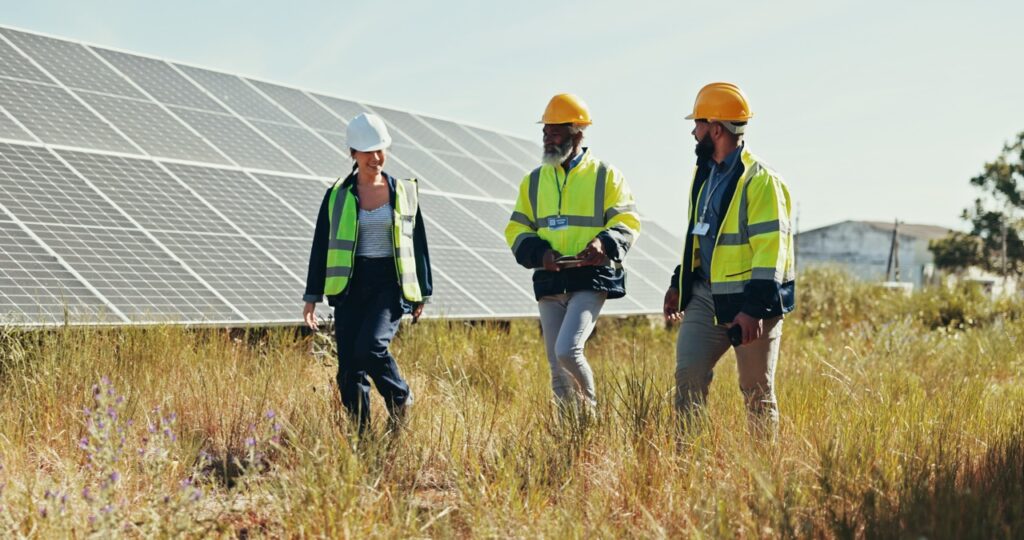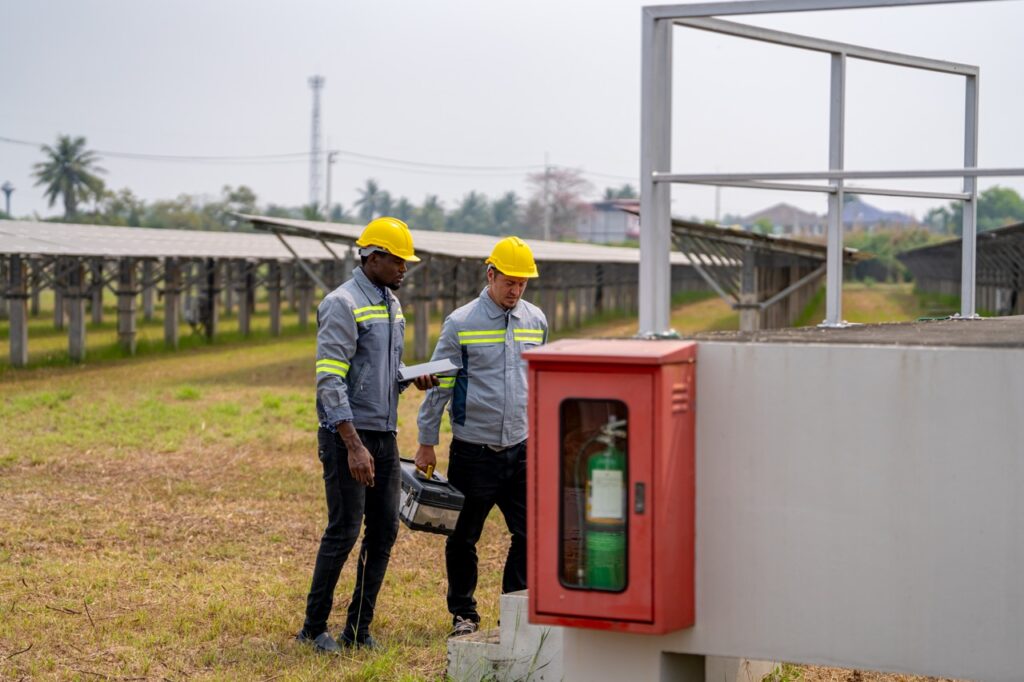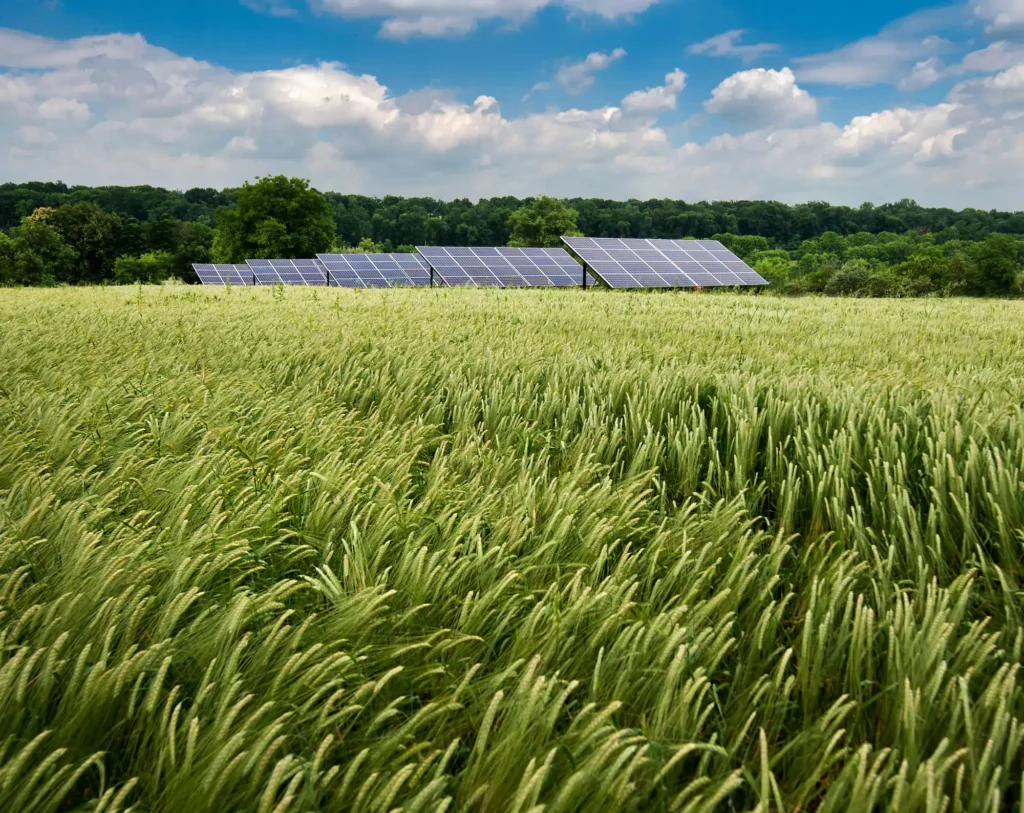
Safe. Responsible. Considered.
Environmental & Safety Commitments
From battery storage and fire safety to visual and acoustic impacts — here’s how we design and manage our renewable energy projects to integrate seamlessly with the communities around them.
Understanding Battery Energy Storage Systems (BESS)
BESS overview
Battery Energy Storage Systems (BESS) help keep the lights on when we need them most. They work by storing extra electricity when demand is low and releasing it back to the grid during busy times. This makes our power supply more reliable and helps Australia use more renewable energy, like solar and wind.

Standalone BESS typically use existing power lines, which avoids the need for building lots of new infrastructure, this saves money and reduces impacts on the environment.
BESS can also help bring down electricity costs by reducing the need for expensive backup power stations and keeping prices more stable.
Fire risk management and technology
BESS projects incorporate multiple layers of fire prevention and risk mitigation strategies to ensure the safety of the surrounding community and environment including:

Early Detection Systems: Advanced sensors continuously monitor for temperature fluctuations, gas emissions, and smoke to detect potential fire hazards at the earliest stage.
Thermal Separation: If combustible gases are detected, a controlled ventilation system ensures safe dispersion, preventing the buildup of hazardous conditions.
Active Ventilation Systems: If combustible gases are detected, a controlled ventilation system ensures safe dispersion, preventing the buildup of hazardous conditions.
Fire Suppression Systems: Each battery module is equipped with an aerosol-based fire suppression system, capable of automatically extinguishing any fire at its source.
Perimeter Fire Protection: Local fire authorities would not be expected to engage with internal fires within the project site. Instead, their role is focused on preventing the spread of fire beyond the facility’s perimeter.
Dedicated Firefighting Resources: A water storage tank is maintained on-site specifically for firefighting purposes, ensuring immediate access to water in case of emergency.
Ember-Proof Mesh: The battery enclosures are equipped with ember-proof mesh to prevent external bushfire threats from igniting the facility.
Regulatory Compliance: The fire safety measures align with Australian fire safety regulations and best practices to ensure all potential risks are managed effectively.
These systems are designed to keep any fire incidents contained within the project site, significantly reducing the risk to nearby homes, properties, and the environment.
BESS key technologies
Modern BESS technology is designed with comprehensive safety measures. Lithium iron phosphate (LiFePO4) batteries, used in many systems, are known for their stability and resistance to overheating.

1. Lithium-ion batteries: The most common choice due to their high energy density, efficiency, and declining costs. Variants include lithium iron phosphate (LiFePO4) and nickel manganese cobalt (NMC).
2. Flow batteries: These use liquid electrolytes and can be scaled easily, making them suitable for long-duration energy storage applications.
3. Sodium-sulfur batteries: Known for their high energy density and long life cycle, these batteries operate at high temperatures and are often used in large-scale storage.
4. Supercapacitors: These provide rapid charge and discharge capabilities, making them ideal for applications requiring quick bursts of energy.
5. Control systems and software: Advanced management systems optimise battery usage, monitor performance, and integrate with grid operations for demand response and energy trading.
6. Power conversion systems (PCS): These convert direct current (DC) from batteries to alternating current (AC) for grid use, and vice versa.
7. Thermal management systems: These ensure that batteries operate within optimal temperature ranges, enhancing safety and lifespan.
8. Integration with renewable energy: Many BESS projects are designed to work alongside solar and wind systems, facilitating grid stability and energy management.
By leveraging these technologies, BESS projects can provide essential services such as peak shaving, frequency regulation, and energy arbitrage, supporting a more resilient and sustainable energy grid.
BESS and landscape integration
The visual impact of a BESS project is carefully considered, with multiple strategies in place to ensure the facility integrates harmoniously with the surrounding landscape, including:

Strategic Site Selection: Strategies are put in place to minimise its visibility from key public vantage points and residential areas.
Landscaping Buffers: Native trees and shrubs are planted around the facility to create a natural visual screen, reducing the aesthetic impact of the infrastructure. Landscaping buffers for BESS range from 2 to 4 meters around the perimeter to further soften the appearance of the site.
Landscaping buffers range from 2 to 4 meters around the perimeter to further soften the appearance of the site.
Setbacks from Residential Areas: Projects are designed with an asset protection setback from the nearest residential properties, ensuring compliance with relevant visual and noise impact regulations.
Low-Profile Infrastructure: The battery enclosures, control centre, and other structures are designed with neutral tones to blend into the surrounding environment. The facility’s connection infrastructure is underground, reducing above-ground visual clutter and maintaining a cleaner aesthetic.
BESS noise management and mitigations
Noise management strategies ensure that the facility does not contribute to noise pollution and remains a low-impact presence in the surrounding community, through:

Baseline Noise Assessments: Before construction, detailed noise monitoring is conducted to establish existing ambient noise levels in the area. This allows for accurate impact assessments and mitigation planning.
Operational Noise Control: BESS units are designed with acoustic enclosures that significantly reduce operational noise emissions. Landscaping buffers and potentially acoustic barriers can be installed around the perimeter of the facility to further dampen any potential noise disturbances.
Post-commissioning noise monitoring will be conducted to verify that the facility operates within the permitted noise levels. Ongoing noise monitoring ensures long-term compliance with environmental standards.
If noise complaints arise, additional assessments and mitigation measures will be implemented as necessary.
Operational Noise Control: BESS units are designed with acoustic enclosures that significantly reduce operational noise emissions.
Landscaping buffers and potentially acoustic barriers can be installed around the perimeter of the facility to further dampen any potential noise disturbances.
Post-commissioning noise monitoring will be conducted to verify that the facility operates within the permitted noise levels.
Ongoing noise monitoring ensures long-term compliance with environmental standards.
If noise complaints arise, additional assessments and mitigation measures will be implemented as necessary.
The lifespan of a BESS
Once a BESS is operational, typically the Lithium iron phosphate (LiFePO4) batteries last for around 20 years. The ongoing maintenance is essential to ensure optimal performance and longevity of the infrastructure. Here’s what’s involved:

Regular Maintenance Visits: Contractors will access the site approximately once a fortnight to conduct routine maintenance tasks. These visits involve inspecting equipment, checking battery performance, and ensuring all components are operating as intended.
Equipment Inspections: Regular inspections of the BESS components, including batteries, inverters, and control systems, are conducted to identify any signs of wear, damage, or malfunction. Any issues discovered are addressed promptly to prevent disruptions to operation.
In Australia, recycling of Battery Energy Storage Systems (BESS) is growing and improving quickly as the technology becomes more common. At the end of an individual battery’s life, not all components need to be removed or discarded. Parts such as inverters, transformers and other balance-of-plant equipment often continue to work for many more years. This means that instead of full removal, there are opportunities to repower (replace old batteries with new ones) or augment (add extra capacity to the existing system).
More than 90% of the lithium battery material can be recycled, and specialist recycling companies in Australia are now able to recover valuable materials such as lithium, nickel, and cobalt from batteries, reducing waste and supporting a circular economy. The recycling industry is expanding alongside the growth of renewable energy projects, which means that the options for re-use, recycling and safe disposal of BESS components are improving year by year.
Importantly, any batteries that are replaced will be safely recycled or disposed of in line with strict environmental standards, helping to minimise waste and protect the environment.
Understanding Solar and Energy Storage Systems (SESS)
SESS overview
A Solar and Energy Storage System (SESS) combines solar panels with battery storage. The solar panels generate electricity from the sun, and the batteries store any excess energy so it can be used later when the sun is not shining.

This helps provide reliable, clean power, supports the electricity grid, and reduces reliance on fossil fuels. By combining solar generation and storage in one system, SESS projects make renewable energy more flexible and dependable for households, businesses, and the wider community.
SESS in Australia
Just like standalone BESS projects, Solar and Energy Storage Systems (SESS) projects provide grid stability by balancing supply and demand. They are also gaining momentum in Australia due to several factors:

Reliability: By pairing solar generation with battery storage, SESS projects deliver renewable energy both during the day and after the sun has set, improving reliability and reducing dependence on fossil fuels.
Renewable Energy Integration: SESS capture excess solar energy when production is high and stores it for times of peak demand, ensuring that renewable energy can be used more effectively, when it is needed most.
Energy Transition Goals: SESS projects contribute directly to Australia’s clean energy goals by providing consistent, low-emission electricity.
Policy Support: Federal and state policies in Australia are encouraging renewable energy and storage, to help stabilise the grid and reduce carbon emissions.
Fire risk management and technology
Just like a standalone BESS, Solar and Energy Storage Systems have multiple layers of fire prevention and risk mitigation strategies to ensure the safety of the surrounding community and environment. SESS projects are carefully designed and located in line with bushfire risk maps and local planning requirements, with vegetation buffers and firebreaks established around equipment.

Battery systems are built to international safety standards and Australian codes, with fire detection, suppression, and thermal management systems in place to reduce the risk of overheating. Emergency management plans are developed in consultation with local fire services, supported by dedicated site access for firefighting, and in some cases joint training exercises. Projects are continuously monitored to detect faults, unusual temperatures or smoke, with systems designed to automatically shut down or isolate equipment if required.
SESS and landscape integration
The visual impact of a Solar and Energy Storage System (SESS) project is carefully considered, with strategies in place to help the facility blend into the surrounding landscape, including:

Strategic Site Selection: Strategies are put in place to minimise its visibility from key public vantage points and residential areas.
Landscaping Buffers: Native trees and shrubs are planted around the facility to create a natural visual screen, reducing the aesthetic impact of the infrastructure. Landscaping buffers for BESS range from 2 to 4 meters around the perimeter to further soften the appearance of the site.
Landscaping buffers range from 2 to 4 meters around the perimeter to further soften the appearance of the site.
Setbacks from Residential Areas: Projects are designed with an asset protection setback from the nearest residential properties, ensuring compliance with relevant visual and noise impact regulations.
Low-Profile Infrastructure: The battery enclosures, control centre, and other structures are designed with neutral tones to blend into the surrounding environment. The facility’s connection infrastructure is underground, reducing above-ground visual clutter and maintaining a cleaner aesthetic.
SESS noise management and mitigations
Noise management strategies ensure that the facility does not contribute to noise pollution and remains a low-impact presence in the surrounding community, through:

Baseline Noise Assessments: Before construction, detailed noise monitoring is conducted to establish existing ambient noise levels in the area. This allows for accurate impact assessments and mitigation planning.
Operational Noise Control: BESS units are designed with acoustic enclosures that significantly reduce operational noise emissions. Landscaping buffers and potentially acoustic barriers can be installed around the perimeter of the facility to further dampen any potential noise disturbances.
Post-commissioning noise monitoring will be conducted to verify that the facility operates within the permitted noise levels. Ongoing noise monitoring ensures long-term compliance with environmental standards.
If noise complaints arise, additional assessments and mitigation measures will be implemented as necessary.
Operational Noise Control: BESS units are designed with acoustic enclosures that significantly reduce operational noise emissions.
Landscaping buffers and potentially acoustic barriers can be installed around the perimeter of the facility to further dampen any potential noise disturbances.
Post-commissioning noise monitoring will be conducted to verify that the facility operates within the permitted noise levels.
Ongoing noise monitoring ensures long-term compliance with environmental standards.
If noise complaints arise, additional assessments and mitigation measures will be implemented as necessary.
The lifespan of SESS technology
Once operational, a Solar and Energy Storage System (SESS) is maintained to ensure optimal performance and longevity. A SESS has two main components with different lifespans:

Solar panels: Typically last 30 years and while they do lose a small amount of efficiency each year, many can still produce electricity well beyond their warranty period.
Battery energy storage (BESS component): Lithium iron phosphate (LiFePO4) batteries generally last 20 years, depending on the usage patterns, and maintenance. Batteries are often replaced or repowered during the life of the solar system.
The recycling industry is expanding alongside the growth of renewable energy projects, which means that the options for re-use, recycling and safe disposal of BESS components are improving year by year. At the end of their life, photovoltaic solar panels can be recycled. Each panel consists of 95% recyclable materials, including aluminium, glass, silicon, silver, copper, indium and germanium. More than 90% of the lithium battery materials can be recycled, and specialist recycling companies in Australia are now able to recover valuable materials such as lithium, nickel, and cobalt from batteries, reducing waste and supporting a circular economy.
Agriculture and renewable energy projects
Maintaining farming practices on site
Some farmers and communities are concerned about losing prime agricultural land to energy projects. However, there are growing opportunities in Australia to design projects that combine farming and solar, known as agrivoltaics or agrisolar. This approach allows farmland to be used for both food production and renewable energy generation.

In addition to grazing livestock under solar panels, there is increasing interest in growing certain crops alongside solar, helping farmers maintain traditional practices while also supporting Australia’s demand for clean energy. This dual use of land protects valuable farmland while contributing to more renewable energy.
Concerns on the reduction of farmland
Farming is a cornerstone of Australia’s economy, supporting food security, regional communities, and the environment. It’s a major employer, a key export sector and remains a vital industry in Australia.

To replace Australia’s existing aging power stations, up to 50 GW of renewable power will be needed in the next 15 years. Even if all of this came from large-scale solar, which typically has a larger footprint then wind or BESS, it would require just 120,000 hectares. This is less than 0.02% of Australia’s farmland and with smart planning, projects can share land with farming, keeping both industries thriving.
The Clean Energy Council discusses renewable energy and opportunities for co-existence with agriculture in more detail.
Soil or water contamination concerns
There is no scientific evidence to suggest that renewable energy infrastructure poses a contamination risk to livestock or food production when co-located with farmland:

- The Clean Energy Council’s talks about contamination concerns and renewable energy in more detail.
Agrivoltaics handbook

In 2025, the Agrivoltaics Handbook was published to help landowners navigate solar infrastructure on farmland. The handbook explains how renewable energy can coexist with farmland. Landowners and solar developers can access information and case studies on grazing within solar farms, growing crops and horticulture, and best-practice guidelines before entering contracts with solar developers.
Benefits for hosting farmers
Agrivoltaics can unlock new locations for renewables plus protect crops from hail or heat. It can also improve the health and wellbeing of sheep and lead to higher wool quality:

- The Clean Energy Council’s Australian Guide to Agrisolar for Large-scale Solar talks about the opportunities and benefits in more detail.
- Landline’s S2025 covers running sheep on paddocks (08/06/2025 ~29 minutes in).
- New research has been published in 2025 from the Colorado State University and Cornell University discusses the presence of solar panels and improved soils and plant growth.
Insurance impacts
Common questions
There are currently no formal guidelines or advice from insurance regulators or industry bodies like the Insurance Council of Australia linking solar farms to increased insurance costs for neighbouring properties. Concerned members of the community are recommended to speak directly with their insurance provider to understand how their policy is evaluated.

- The Clean Energy Council discusses public liability insurance and landholder protection in more detail.
Minimising fire risk
Renewable energy and fire risk
Evidence shows that with proper maintenance, vegetation control, and robust safety procedures, the risk of fire remains low. Fire detection systems, routine inspections, and suppression protocols all help to minimise this risk. In some cases, allowing livestock to graze around solar panels is an effective way to manage grass and reduce both fire hazards and maintenance costs.

Emergency Management Plans are prepared as part of planning processes, in consultation with local emergency and fire authorities. This addresses fire risk prevention and response, with strategies in place to contain any incidents within the site.
Some community members read in the news that volunteer fire fighters will not fight fires around new renewable projects, but specialised fire response training, site visits, and simulations for the local rural fire brigade are undertaken for projects, to ensure preparedness.
- The Clean Energy Council discusses minimising bushfire risk in more detail.
- For large-scale renewable energy facilities, the CFA has developed the Design Guidelines and Model Requirements for Renewable Energy Facilities (PDF 15.2MB) .
- A case study for how collaboration is undertaken with local fire fighters is available here.

